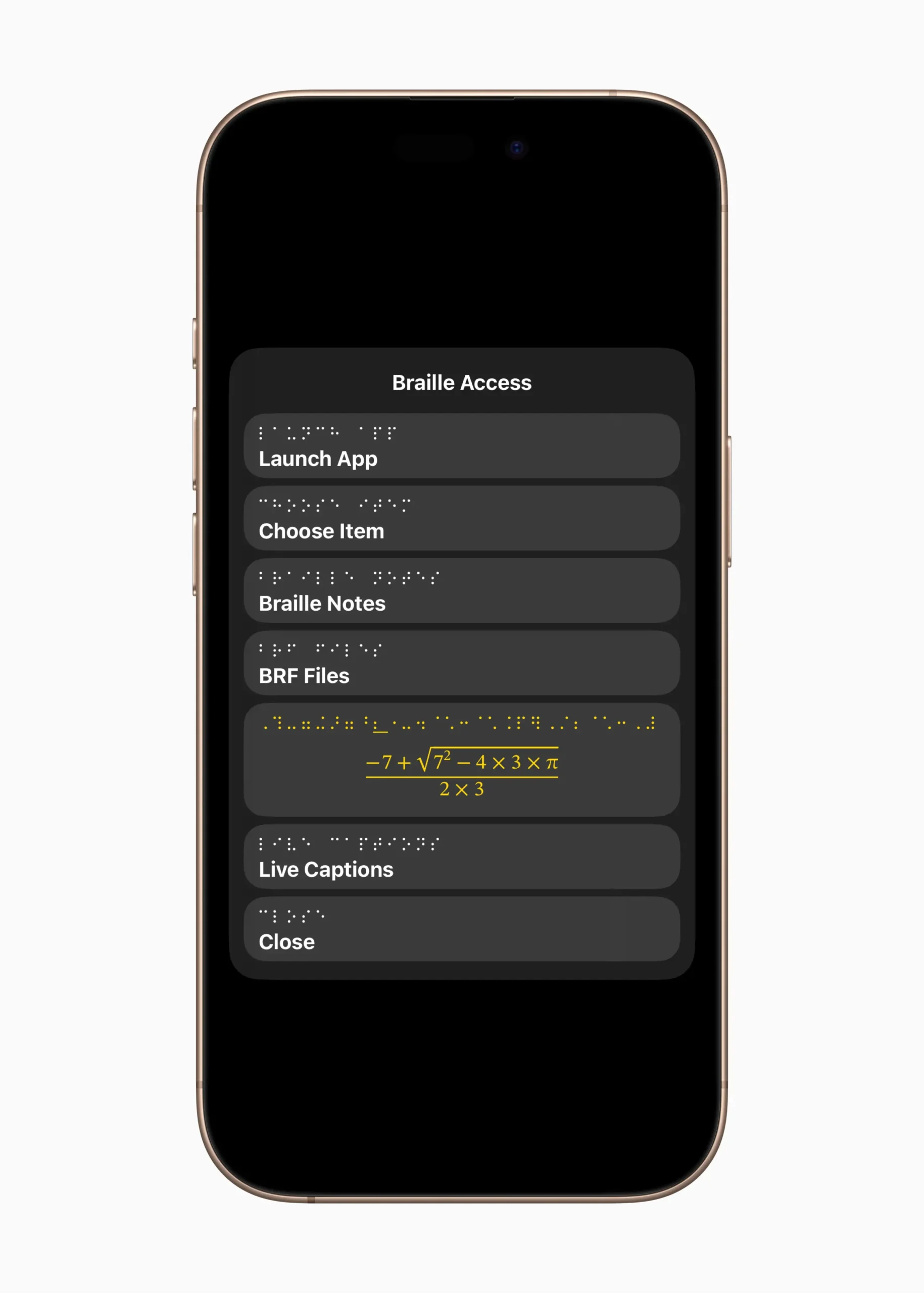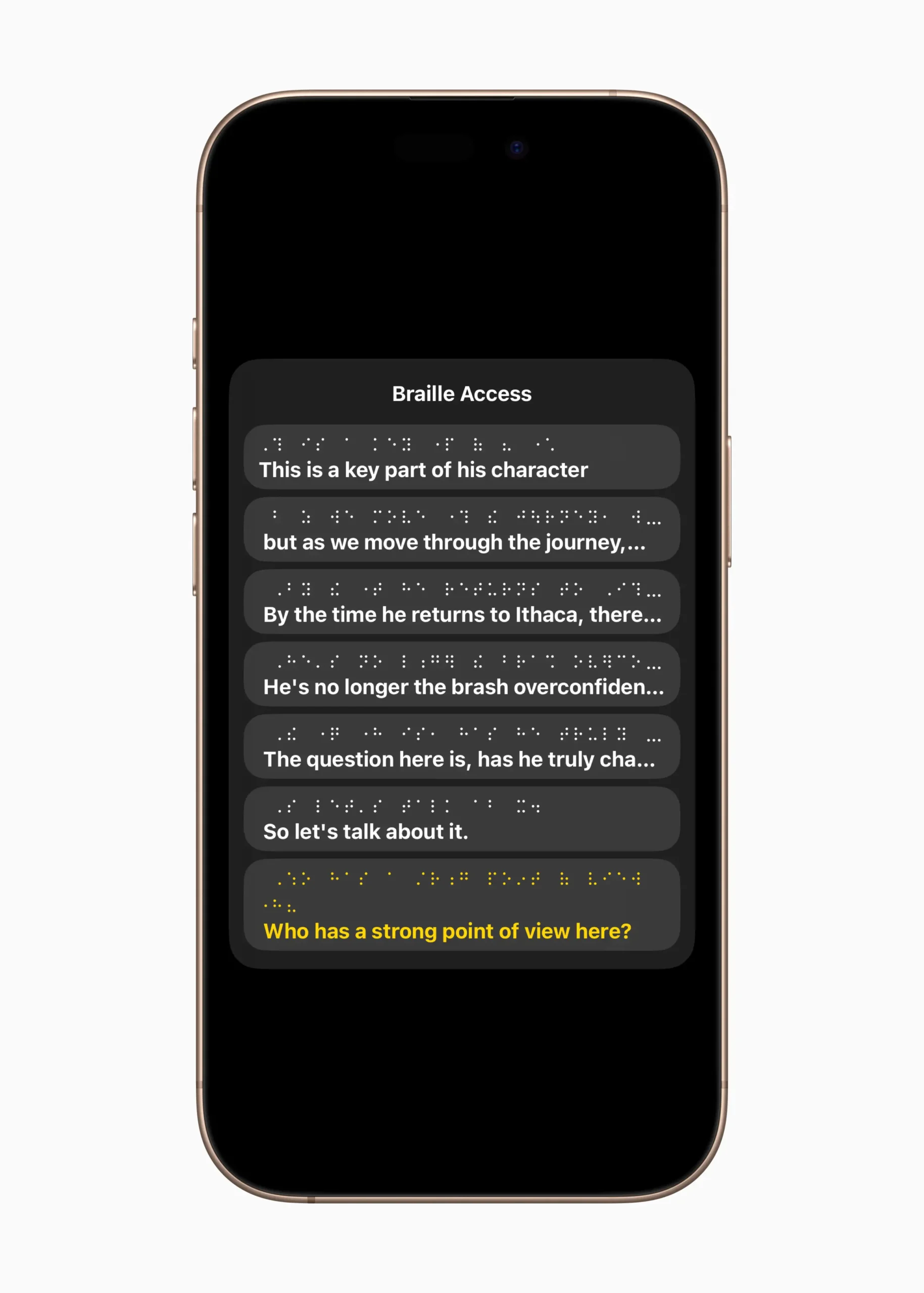Yesterday Apple unveiled a sweeping collection of accessibility upgrades set to arrive across its platforms later this year. From iPhone and iPad to Apple Watch, Mac, and Vision Pro, the company is pushing forward with some of its most meaningful improvements to date. Apple accessibility features are designed to empower users with disabilities while enhancing usability for all, the update introduces advanced technologies, intuitive tools, and platform-wide enhancements that underscore Apple’s longstanding commitment to inclusivity.
We’ll explores Apple’s latest accessibility announcements in detail, from headline features to deeper system-wide changes, and discusses what they mean for the future of inclusive tech.
A Unified Vision of Inclusion
Apple’s focus on accessibility has never been a marketing footnote—it’s been a pillar of product development. The 2025 announcement builds on a legacy of innovation that includes VoiceOver, AssistiveTouch, Switch Control, and Sound Recognition. With this year’s rollout, Apple aims not just to refine but to expand the scope of how people interact with their devices in personal, adaptive ways.
The new features aren’t simply retrofitted add-ons; they’re core to the system experience. Whether through on-device intelligence, UI refinements, or multimodal interaction, Apple continues to blur the line between design and assistive technology.



Apple Accessibility Highlights of 2025
Apple’s upcoming accessibility features target specific user needs with surgical precision. Here are the most notable announcements:
Nutrition Labels
Perhaps the most groundbreaking introduction in Apple accessibility features is the new Nutrition Labels for apps. These standardized disclosures will inform users—particularly those with disabilities—about the accessibility capabilities and limitations of apps before downloading.
Just as nutrition labels empower dietary choices, these disclosures let users know whether an app supports key functions like VoiceOver, Dynamic Text, or custom input devices. It’s a critical step toward transparency in the App Store and an accountability boost for developers.



New Magnifier Capabilities on macOS
macOS is getting a significant usability boost through the enhanced Magnifier tool, which now offers a new reader mode. This addition makes it easier for low-vision users to isolate blocks of text in a simplified layout, with improved focus tracking, pointer smoothing, and color customization for reading comfort.
These upgrades represent Apple’s most robust macOS accessibility enhancements in years and position the Mac as an even more capable platform for people with visual impairments.
Braille Advancements Across Devices
Apple is refining its braille experience across iPhone, iPad, and Mac with support for multi-line braille displays and enhanced navigation through braille commands. The changes help users interact with content more fluidly, particularly in apps where layout or context matters.
For developers, these improvements come with expanded APIs that allow more granular control of braille output—ensuring that apps can provide meaningful structure to braille users in a variety of contexts.


Live Captions on Apple Watch
Live Captions—already available on iOS and macOS—are making their way to Apple Watch for the first time. This transformative feature allows deaf and hard-of-hearing users to follow conversations, video calls, and real-time audio via onscreen captions.
The Apple Watch version adapts to the device’s screen size with scrollable transcripts and context-aware adjustments, such as auto-highlighting the speaker during group calls. This makes the Apple Watch not just a fitness companion, but an accessible communication device.
Apple Vision Pro: Enhanced Visual Access
The Apple Vision Pro is getting tailored enhancements that improve the viewing experience for users with low vision. Users will now be able to control visual contrast, enable motion reduction, and apply personalized display profiles—all within the immersive spatial computing environment.
For users who rely on precise visual cues, these tools allow them to enjoy immersive apps, 3D environments, and productivity tools without discomfort or visual strain.
Smarter Everyday with Apple Accessibility features
Beyond the marquee features, Apple is also bringing nuanced upgrades across the board. Siri will offer more contextual awareness for accessibility commands, enabling faster setup and hands-free adjustments to key assistive settings. Sound Recognition is expanding to support more environmental triggers. FaceTime will introduce gesture-based interactions for those with limited mobility.

For cognitive accessibility, users can simplify interface interactions, reduce clutter, and activate focus-enhancing modes. These improvements are especially beneficial for users with ADHD, autism, and other neurodivergent experiences.
The Developer Opportunity
Apple is also handing developers new tools and APIs to better support inclusive design. With the launch of Accessibility Nutrition Labels, developers will now need to evaluate their apps more thoroughly—ensuring compatibility with VoiceOver, Switch Control, and braille input methods.
The company is expected to release updated developer documentation, along with workshops at WWDC 2025 to support this shift.
These additions align with Apple accessibility broader push for ecosystem-wide consistency in providing access to these features, from watchOS to visionOS. Developers now have more incentive—and more tools—to ensure accessibility isn’t an afterthought.
Looking Ahead: A Blueprint for Inclusive Tech
Apple’s approach to accessibility in 2025 proves once again that the company doesn’t view inclusion as a product category—it’s a design principle. By introducing tools that are useful for people with disabilities but also beneficial to broader audiences (like Live Captions and Magnifier Reader Mode), Apple continues to normalize inclusive thinking.
In a world where many accessibility tools still feel like bolted-on features, Apple’s cohesive, polished approach offers a benchmark for the rest of the industry.




